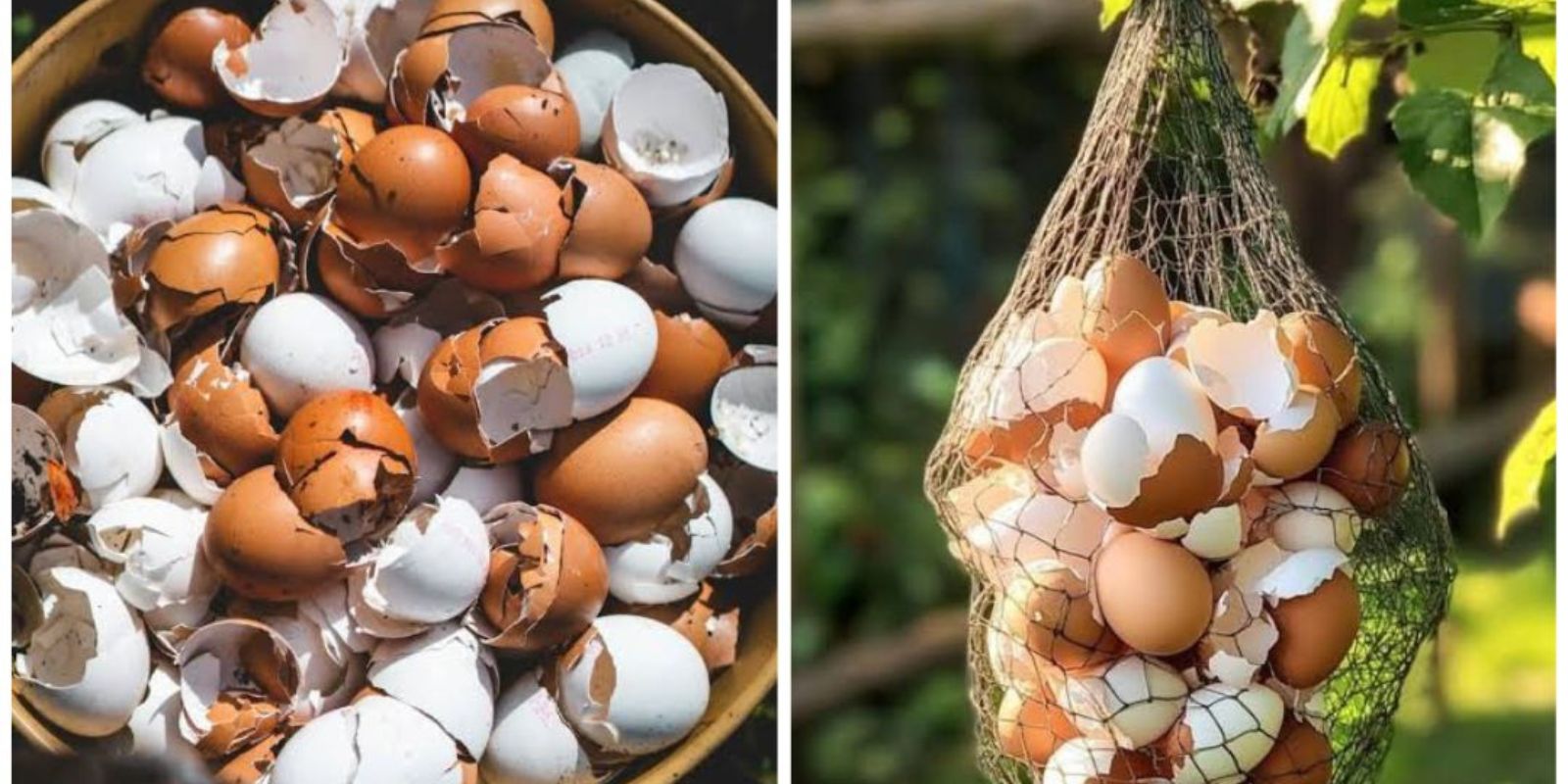Eggshells are often considered kitchen waste, but in the gardening world, they are an underrated powerhouse. From boosting soil health to deterring pests, eggshells offer multiple benefits for your garden. By hanging a mesh bag of crushed eggshells in your garden, you can maximize these benefits in an easy and sustainable way. This article dives into why this simple trick works wonders and how you can incorporate it into your gardening routine.
The Power of Eggshells in Gardening
Eggshells are made up primarily of calcium carbonate, the same compound that makes limestone and seashells beneficial for soil health. They also contain small amounts of magnesium, phosphorus, and other trace minerals, making them a natural fertilizer. Here’s how hanging a mesh bag of eggshells can be a game-changer for your garden.
Benefits of Hanging a Mesh Bag of Eggshells in Your Garden
1. Nutrient Enrichment
As eggshells break down, they release calcium into the soil, a critical nutrient for plant cell walls. Calcium deficiency can lead to blossom-end rot in fruits like tomatoes and peppers, making eggshells an effective preventative measure. Hanging them in a mesh bag allows rainwater to slowly leach the calcium into the soil, enriching it over time.
2. Pest Deterrent
Crushed eggshells in the soil can act as a natural pest repellent. Slugs, snails, and other soft-bodied pests avoid crawling over the sharp edges of the shells. By hanging a bag of eggshells, you make it easy to access and sprinkle them where needed, protecting your plants from damage.
3. Compost Booster
Eggshells are an excellent addition to your compost pile. They decompose quickly and provide calcium to balance the compost’s nutrient profile. Hanging the mesh bag near your compost bin allows you to add eggshells easily while keeping them aerated and dry until needed.
4. Soil pH Balancer
Soils that are too acidic can hinder plant growth. Eggshells naturally neutralize acidity, helping to balance the soil’s pH. When hung in a mesh bag, rainwater dissolves small amounts of calcium carbonate, slowly amending the soil. This is especially helpful for plants like roses, spinach, and beans, which thrive in slightly alkaline soil.
5. Waste Reduction
Using eggshells in the garden is an eco-friendly way to reduce kitchen waste. Instead of throwing eggshells in the trash, repurpose them to create a sustainable gardening practice that benefits both the environment and your plants.
6. Bird Attractant
Birds love eggshells for their calcium content, especially during nesting season. Hanging a mesh bag of eggshells in your garden invites these feathered friends, who in turn act as natural pest controllers by feeding on insects like caterpillars and aphids.
7. Visual Indicator
A mesh bag allows you to monitor how quickly the eggshells are breaking down. If they’re decomposing too slowly, you can crush them into smaller pieces to accelerate the process. It’s a visual reminder of the natural cycle taking place in your garden.
8. Microbial Activity Boost
Eggshells encourage the growth of beneficial microbes in the soil. These microbes help break down organic matter and release nutrients that plants need to thrive. Hanging eggshells in a mesh bag ensures they’re accessible to the soil ecosystem without being buried or wasted.
How to Prepare and Hang Eggshells in Your Garden
Step 1: Collect and Clean Eggshells
After using eggs, rinse the shells thoroughly to remove any remaining egg white or yolk, which can attract pests. Allow them to air-dry completely to prevent mold growth.
Step 2: Crush the Eggshells
Use your hands or a mortar and pestle to crush the eggshells into smaller pieces. While large pieces can still break down over time, smaller fragments decompose more quickly and are easier for pests to avoid.
Step 3: Choose a Mesh Bag
Select a breathable mesh bag, such as an onion or produce bag, to hold the eggshells. The bag should allow air and water to flow through while keeping the eggshells contained.
Step 4: Hang the Bag in Your Garden
Place the mesh bag in an area where rainwater or sprinkler water can reach it. Tie it to a sturdy branch, trellis, or fence post. Ensure it’s easily accessible so you can sprinkle eggshells as needed.
Step 5: Use the Eggshells
Periodically take some crushed eggshells from the bag and sprinkle them around the base of plants, in your compost pile, or in areas prone to pests.
Tips for Success
- Start Small: If you’re new to using eggshells in the garden, start with a few plants and observe the results.
- Crush Thoroughly: Smaller pieces decompose faster and are more effective against pests.
- Combine with Other Methods: Use eggshells alongside other natural fertilizers like coffee grounds or compost for a balanced nutrient mix.
- Avoid Overuse: While eggshells are beneficial, too much can create an imbalance in the soil. Use them sparingly and monitor plant health.
- Keep It Clean: Regularly check the mesh bag to ensure it remains dry and free from mold.
Why This Simple Hack Is So Effective
The beauty of hanging a mesh bag of eggshells lies in its simplicity and versatility. It’s a low-cost, low-maintenance way to enhance your garden’s health while reducing waste. Whether you’re growing vegetables, flowers, or ornamental plants, this method provides long-term benefits with minimal effort.
Join the Eggshell Gardening Movement!
Have you tried using eggshells in your garden? Share your tips, photos, and success stories in the comments below! Together, we can make gardening more sustainable and rewarding.

